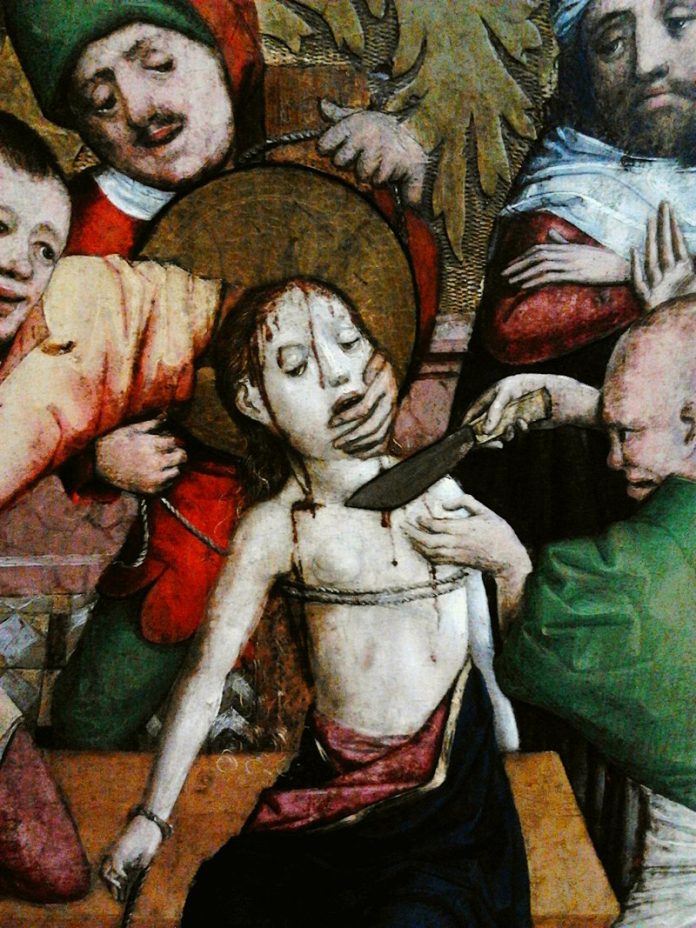As Belloc notes, a legend does not imply untruth, but, more, some primordial truth so important that is has been preserved, even embellished. In this light, we should see the life of Saint Barbara, whose feast is on December 4th, but who was removed from the calendar in the revisions of 1969, due to the lack of historicity of the events surrounding her life.
These may be briefly recounted: She was born a pagan, sometime towards the end of the third or early fourth century, to a rich man named Dioscorus who, for reasons that are obscure, kept her locked in a tower away from the outside world. Somehow, in this seclusion, Barbara discovered Christianity, and converted, refusing thereafter any offers of marriage. She was cruelly tortured to force her to recant her Faith, but she refused, her wounds healed each night by a bright light shining into her cell. Finally, she was condemned to be beheaded, and her head lopped off by none other than her own father, who was himself duly dispatched by a presumably divinely-sanctioned lightning bolt.
Whatever the details may be of her life, countless miracles have been attributed to Saint Barbara, then, and ever since, and she is one of the most popular of saints. Due to the explosive nature of her father’s demise, she is the patroness of miners, engineers, artillerymen, armourers, as well as mathematicians. The family of drugs known as ‘barbiturates’ are named after her, suggested by a soldier in a tavern, where their chemist discoverer, Adolf von Baeyer, was having a drink. Santa Barbara, California, is named after her, along with countless churches and shrines across the world. Saint Faustina recounted that Saint Barbara appeared to her, and G.K. Chesterton penned a poem in her honour, the Ballad of Saint Barbara.
And on that note, Saint Barbara, ora pro nobis! +

